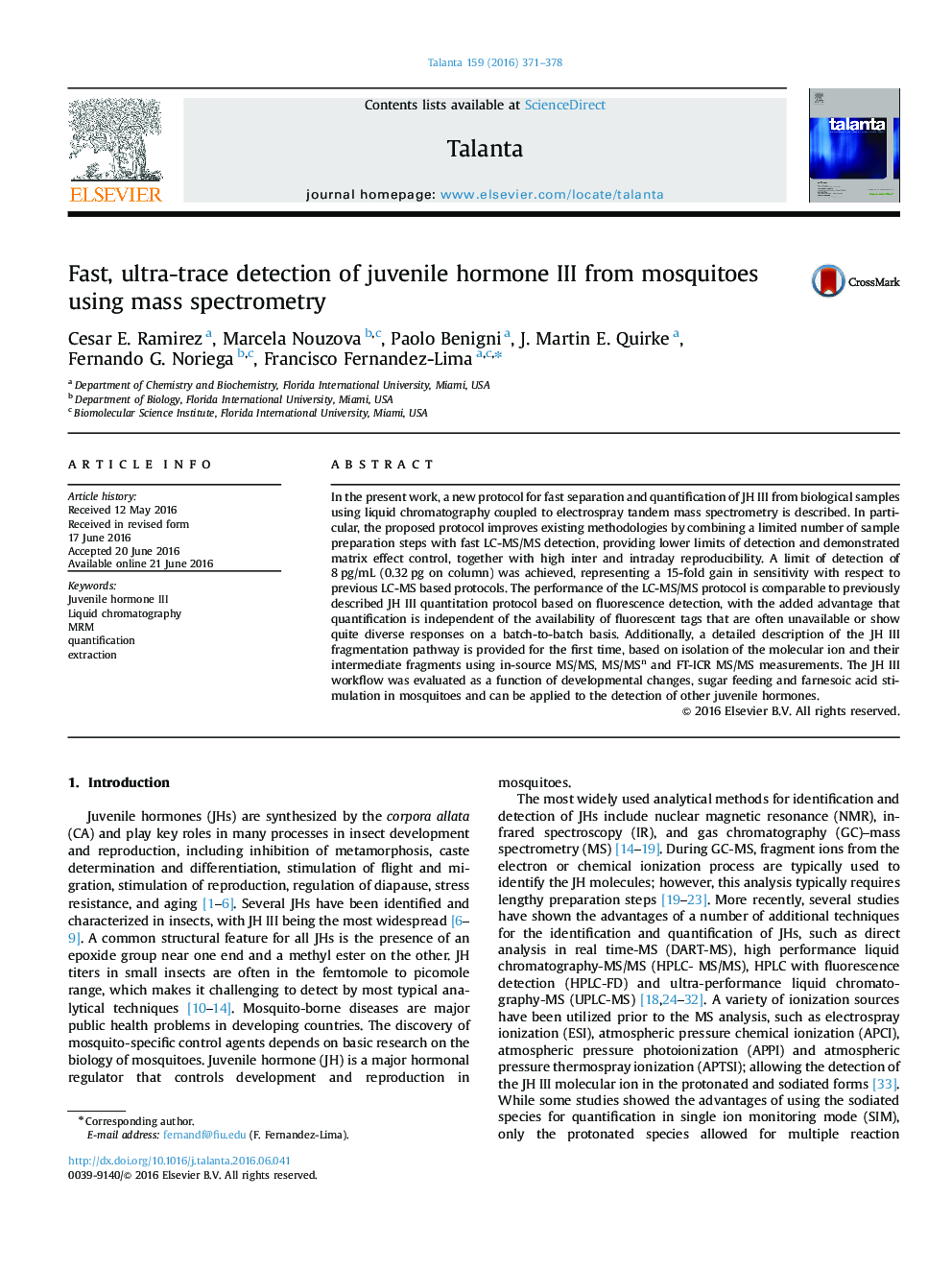| Article ID | Journal | Published Year | Pages | File Type |
|---|---|---|---|---|
| 1241787 | Talanta | 2016 | 8 Pages |
•A new protocol for fast separation and quantification of JH III using liquid chromatography coupled to tandem mass spectrometry is described.•The proposed protocol improves existing methodologies by combining a limited number of sample preparation steps with fast LC-MS/MS detection.•A 8 pg/mL (0.32 pg on column) limit of detection (15-fold gain in sensitivity) with high inter and intraday reproducibility is reported. The JH III fragmentation pathway is provided for the first time, based on in-source MS/MS, MS/MSn and FT-ICR MS/MS measurements.•The performance of the LC-MS/MS protocol is comparable to previously described JH III quantitation protocol based on fluorescence detection.•The JH III workflow was evaluated as a function of developmental changes, sugar feeding and farnesoic acid stimulation in mosquitoes.
In the present work, a new protocol for fast separation and quantification of JH III from biological samples using liquid chromatography coupled to electrospray tandem mass spectrometry is described. In particular, the proposed protocol improves existing methodologies by combining a limited number of sample preparation steps with fast LC-MS/MS detection, providing lower limits of detection and demonstrated matrix effect control, together with high inter and intraday reproducibility. A limit of detection of 8 pg/mL (0.32 pg on column) was achieved, representing a 15-fold gain in sensitivity with respect to previous LC-MS based protocols. The performance of the LC-MS/MS protocol is comparable to previously described JH III quantitation protocol based on fluorescence detection, with the added advantage that quantification is independent of the availability of fluorescent tags that are often unavailable or show quite diverse responses on a batch-to-batch basis. Additionally, a detailed description of the JH III fragmentation pathway is provided for the first time, based on isolation of the molecular ion and their intermediate fragments using in-source MS/MS, MS/MSn and FT-ICR MS/MS measurements. The JH III workflow was evaluated as a function of developmental changes, sugar feeding and farnesoic acid stimulation in mosquitoes and can be applied to the detection of other juvenile hormones.
Graphical abstractFigure optionsDownload full-size imageDownload as PowerPoint slide
